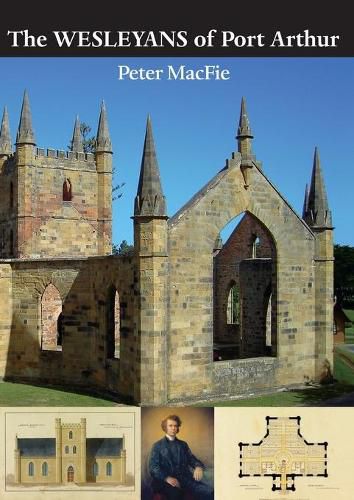Readings Newsletter
Become a Readings Member to make your shopping experience even easier.
Sign in or sign up for free!
You’re not far away from qualifying for FREE standard shipping within Australia
You’ve qualified for FREE standard shipping within Australia
The cart is loading…






This title is printed to order. This book may have been self-published. If so, we cannot guarantee the quality of the content. In the main most books will have gone through the editing process however some may not. We therefore suggest that you be aware of this before ordering this book. If in doubt check either the author or publisher’s details as we are unable to accept any returns unless they are faulty. Please contact us if you have any questions.
Wesleyan missionaries had worked at the Port Arthur penal settlement for about 12 years, following its establishment in 1821. However, their role has received little recognition as part of the Port Arthur story. Methodists believed in "forgiving ones' enemies" and "helping the down- trodden". They were involved in social reforms and anti-slavery movements in the 18th and 19th centuries. When Port Arthur was established, the Church of England declined the opportunity to provide a Chaplain to the site. Lt. Governor George Arthur then offered the chaplaincy contract to the Wesleyans, who accepted despite onerous responsibilities and poor conditions. The first Wesleyan Chaplain was Rev. John Manton. Posted to Port Arthur before his house was built, he had to share with the Wesleyan Medical Officer, Dr Brownell. Rev. Manton took a particular interest in the education provided, and also in the conditions for convicts. Mrs. Manton supported her husband's work in the community and cared for their large family. The Wesleyans oversaw the building, by convict labour, of Port Arthur's iconic church. Its foundation plaque was laid in April 1836, and in July 1837 the first service took place in the partially completed church. On Sundays, regular services were conducted for convicts, soldiers, civil staff and others associated with the settlement. The Wesleyans also provided schooling, performed marriages, baptized infants and buried the dead. They visited hospital patients and consoled convicts in solitary confinement. Later, a Catholic Chaplain was appointed to Port Arthur and the Anglican Bishop staged a takeover of the Wesleyan position. However, the Wesleyans had played an important but little-known role in the formative years of Port Arthur-and this role and its protagonists are described in this book.
$9.00 standard shipping within Australia
FREE standard shipping within Australia for orders over $100.00
Express & International shipping calculated at checkout
This title is printed to order. This book may have been self-published. If so, we cannot guarantee the quality of the content. In the main most books will have gone through the editing process however some may not. We therefore suggest that you be aware of this before ordering this book. If in doubt check either the author or publisher’s details as we are unable to accept any returns unless they are faulty. Please contact us if you have any questions.
Wesleyan missionaries had worked at the Port Arthur penal settlement for about 12 years, following its establishment in 1821. However, their role has received little recognition as part of the Port Arthur story. Methodists believed in "forgiving ones' enemies" and "helping the down- trodden". They were involved in social reforms and anti-slavery movements in the 18th and 19th centuries. When Port Arthur was established, the Church of England declined the opportunity to provide a Chaplain to the site. Lt. Governor George Arthur then offered the chaplaincy contract to the Wesleyans, who accepted despite onerous responsibilities and poor conditions. The first Wesleyan Chaplain was Rev. John Manton. Posted to Port Arthur before his house was built, he had to share with the Wesleyan Medical Officer, Dr Brownell. Rev. Manton took a particular interest in the education provided, and also in the conditions for convicts. Mrs. Manton supported her husband's work in the community and cared for their large family. The Wesleyans oversaw the building, by convict labour, of Port Arthur's iconic church. Its foundation plaque was laid in April 1836, and in July 1837 the first service took place in the partially completed church. On Sundays, regular services were conducted for convicts, soldiers, civil staff and others associated with the settlement. The Wesleyans also provided schooling, performed marriages, baptized infants and buried the dead. They visited hospital patients and consoled convicts in solitary confinement. Later, a Catholic Chaplain was appointed to Port Arthur and the Anglican Bishop staged a takeover of the Wesleyan position. However, the Wesleyans had played an important but little-known role in the formative years of Port Arthur-and this role and its protagonists are described in this book.